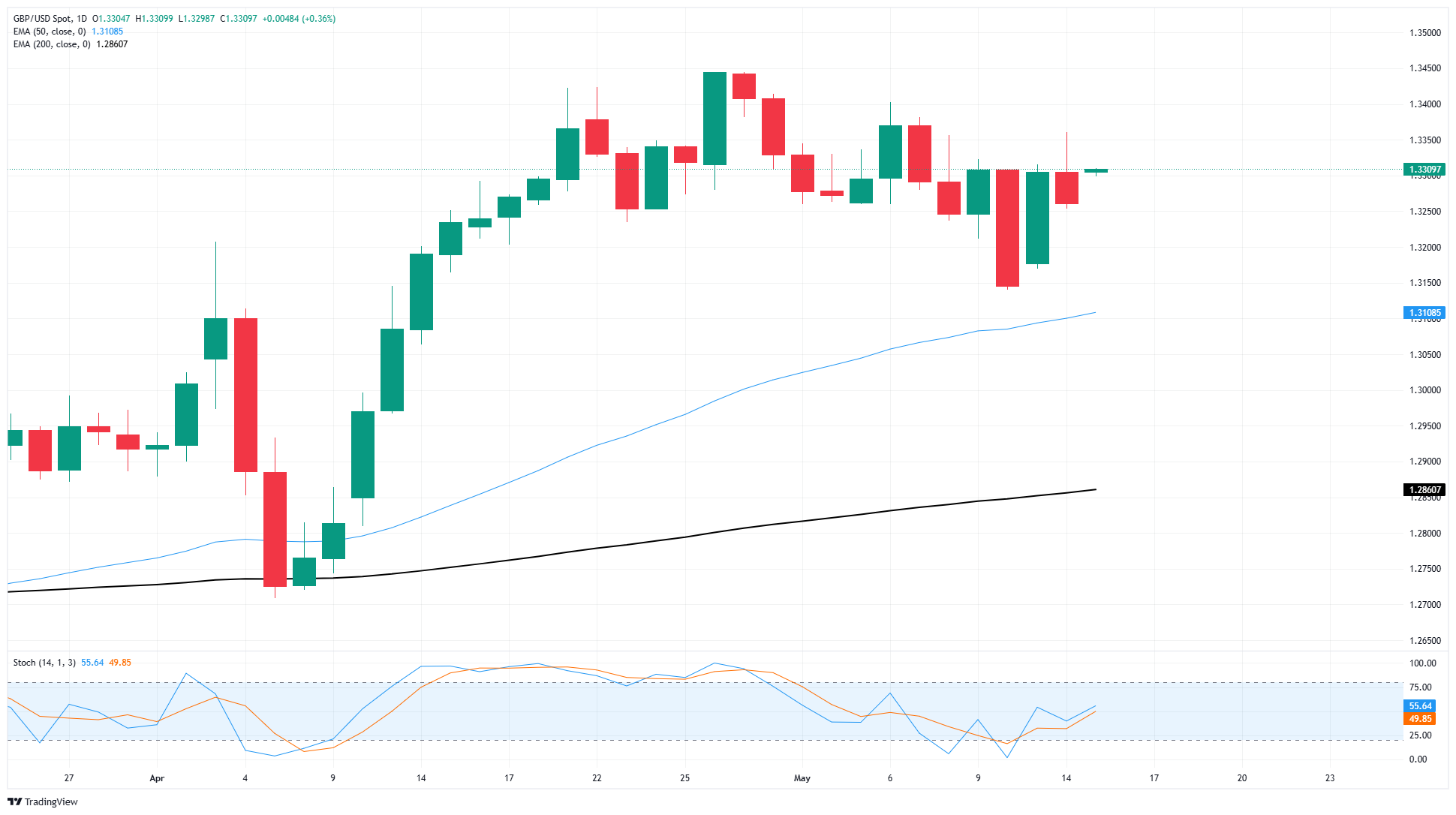- GBP/USD shed a few points to hold in rough congestion zone near 1.3300.
- UK GDP figures beat expectations, and US PPI inflation also eased more than expected.
- Key US consumer sentiment figures in the barrel for Friday.
GBP/USD turned lower on Thursday, shaving off a few points and keeping bids stuck to a near-term consolidation range just south of 1.3300 as markets got more or less what they wanted from economic data releases during both the London and American market sessions. United Kingdom (UK) Gross Domestic Product and United States (US) Producer Price Index (PPI) inflation both beat the street, preventing markets from moving too far in either direction.
UK GDP growth for the first quarter came in stronger than expected, bouncing to a surprising 0.7% QoQ. On the US side, PPI inflation eased to just 0.1% MoM in April and giving investors to breathe a sigh of relief, at least for now, that tariff impacts haven’t hit headline economic data… at least for now.
The University of Michigan’s (UoM) latest Consumer Sentiment Index will be released on Friday. Median market forecasts are expecting an uptick in consumer survey results, which has fallen for four consecutive months to hit a two-year low of 52.2. Investors are hoping that consumer sentiment will recover slightly and push the index back up to 53.4.
GBP/USD price forecast
GBP/USD price action remains stubbornly stuck in a choppy zone near the 1.3300 handle. Bids remain unable to climb back over the key price level ever since backsliding from 1.3445 in early April, however bullish pressure remains firm enough to prevent a decline back below the 50-day Exponential Moving Average (EMA) near 1.3110.
GBP/USD daily chart

Pound Sterling FAQs
The Pound Sterling (GBP) is the oldest currency in the world (886 AD) and the official currency of the United Kingdom. It is the fourth most traded unit for foreign exchange (FX) in the world, accounting for 12% of all transactions, averaging $630 billion a day, according to 2022 data.
Its key trading pairs are GBP/USD, also known as ‘Cable’, which accounts for 11% of FX, GBP/JPY, or the ‘Dragon’ as it is known by traders (3%), and EUR/GBP (2%). The Pound Sterling is issued by the Bank of England (BoE).
The single most important factor influencing the value of the Pound Sterling is monetary policy decided by the Bank of England. The BoE bases its decisions on whether it has achieved its primary goal of “price stability” – a steady inflation rate of around 2%. Its primary tool for achieving this is the adjustment of interest rates.
When inflation is too high, the BoE will try to rein it in by raising interest rates, making it more expensive for people and businesses to access credit. This is generally positive for GBP, as higher interest rates make the UK a more attractive place for global investors to park their money.
When inflation falls too low it is a sign economic growth is slowing. In this scenario, the BoE will consider lowering interest rates to cheapen credit so businesses will borrow more to invest in growth-generating projects.
Data releases gauge the health of the economy and can impact the value of the Pound Sterling. Indicators such as GDP, Manufacturing and Services PMIs, and employment can all influence the direction of the GBP.
A strong economy is good for Sterling. Not only does it attract more foreign investment but it may encourage the BoE to put up interest rates, which will directly strengthen GBP. Otherwise, if economic data is weak, the Pound Sterling is likely to fall.
Another significant data release for the Pound Sterling is the Trade Balance. This indicator measures the difference between what a country earns from its exports and what it spends on imports over a given period.
If a country produces highly sought-after exports, its currency will benefit purely from the extra demand created from foreign buyers seeking to purchase these goods. Therefore, a positive net Trade Balance strengthens a currency and vice versa for a negative balance.

